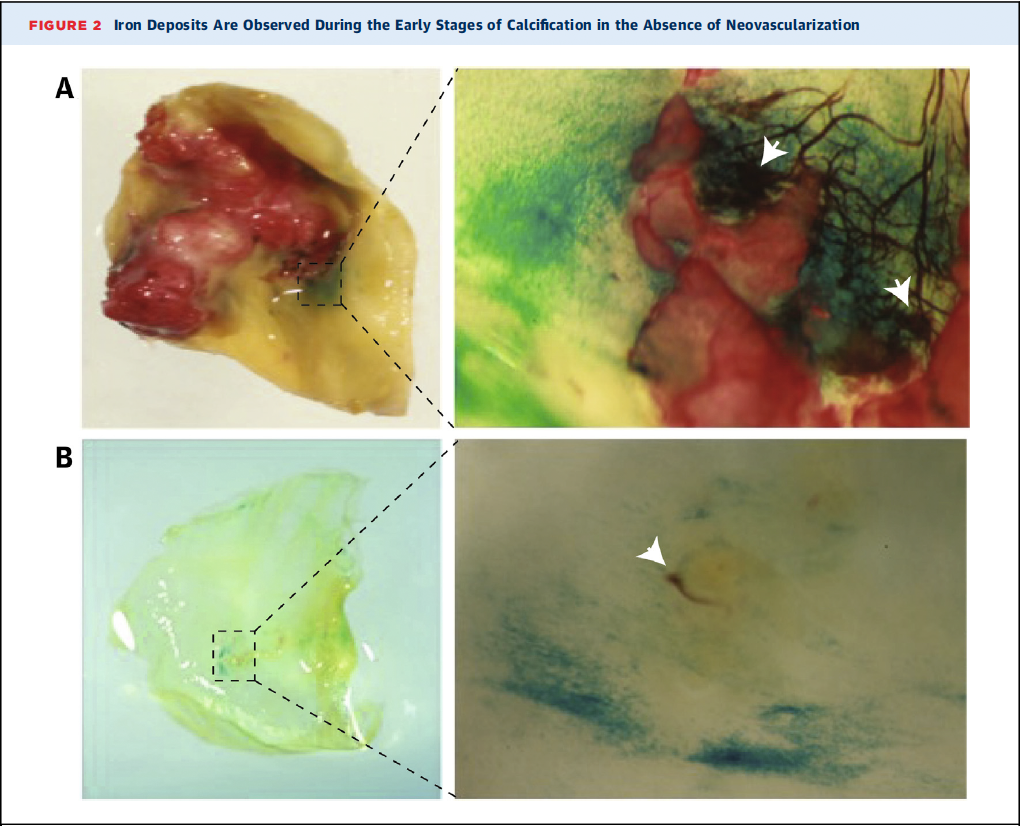Relationship of Iron Deposition to Calcium Deposition in Human Aortic Valve Leaflets
Morvan M, Arangalage D, Franck G, Perez F, Cattan-Levy L, Codogno I, Jacob-Lenet MP, Deschildre C, Choqueux C, Even G, Michel JB, Back M, Messika-Zeitoun D, Nicoletti A, Caligiuri G, Laschet J
2019 • J Am Coll Cardiol • [pdf]

BACKGROUND: Intraleaflet hematomas are associated with advanced stages of aortic valve calcification and suspected to be involved in disease progression. However, the mechanism by which the entry of blood cells into the valves affects the biology of aortic valvular interstitial cells (VICs) remains to be elucidated.
OBJECTIVES: This study sought to evaluate the putative link between intraleaflet hematoma and aortic valve calcification and to assess its pathophysiological implications.
METHODS: The spatial relationship between calcium deposits and intraleaflet hematomas was analyzed by whole-mount staining of calcified and noncalcified human aortic valves, obtained in the context of heart transplantation and from patients who underwent surgical valve replacement. Endothelial microfissuring was evaluated by en face immunofluorescence and scanning electron microscopic analyses of the fibrosa surface. Red blood cell (RBC) preparations were used in vitro to assess, by immunofluorescence microscopy and Alizarin red staining, the potential impact of intraleaflet hematomas on phenotypic changes in VICs.
RESULTS: Intraleaflet hematomas, revealed by iron deposits and RBCs into the fibrosa, secondary to endothelial microfissuring, were consistently found in noncalcified valves. The contact of primary VICs derived from these valves with RBCs resulted in a global inflammatory and osteoblastic phenotype, reflected by the up-regulation of interleukin-6, interleukin-1beta, bone sialoprotein, osteoprotegerin, receptor activator of nuclear factor kappa B, bone morphogenic protein 2, and muscle segment homeobox 2, the production of osteocalcin, and the formation of calcium deposits.
CONCLUSIONS: The acquisition of an osteoblastic phenotype in VICs that come into contact with the senescent RBCs of intraleaflet hematomas may play a critical role in the initiation of calcium deposition into the fibrosa of human aortic valves.

